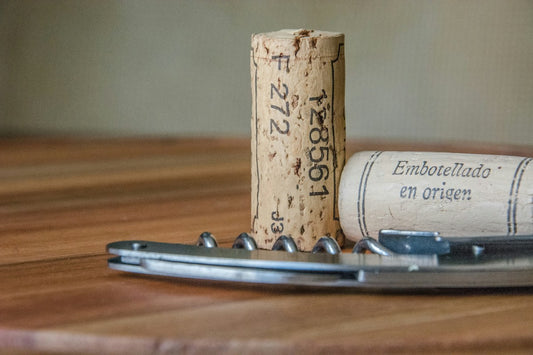Can You Eat Cold Rice? Is It Safe To Eat?
Norah Clark
Yes, you can eat cold rice, but it should be properly refrigerated and stored to avoid foodborne illness. Reheat it thoroughly or use it in cold dishes like salads.
Rice is a staple food in nearly every kitchen across the globe. It’s inexpensive, simple to cook, and can be prepared in large quantities.
Read on to find out how to properly store and eat cold rice, so you won’t be worried about food poisoning!
Eating Cold Rice and The Risks
Consuming cold rice or reheated rice, can increase the risk of food poisoning. Food poisoning is due to Bacillus Cereus, which may cause abdominal cramps, diarrhea nausea, vomiting, and abdominal cramps, all in the first 30 minutes after eating contaminate food.
Bacillus Cereus is often found in soil and is capable of contaminating cooked rice. The bacteria creates seeds on rice, which act as a shield from the heat from cooking.
So, even cold rice is still affected by food poisoning organisms, even when it has been cooked to extreme temperatures.
In the case of chilled rice, the risk isn’t always in the bacteria that are already present, however, it is in the way that the rice was cooled and stored.
Bacillus Cereus, as well as other bacteria increase exponentially in temperatures between 40 to 140 degrees Fahrenheit.
That means if let your rice simmer or sit at room temperature, the spores grow quickly, increasing the likelihood of getting sick after you’ve consumed the cold rice.
How To Store and Eat Cold Rice
Rice cooked in the oven does not remove any Bacillus Cereus spores, therefore you must treat rice like you would treat other perishable food.
Understanding how to store, handle and cook rice is the most effective way to avoid any illness that may be caused by bacteria.
These are helpful tips for how to keep and handle rice:
- I recommend to refrigerate fresh prepared rice. First, you have to cool it for an hour by dividing the rice in half and putting it in shallow containers. This cools the rice faster. To accelerate the process of cooling, pop the container in a cold water bath.
- It is essential to put it in refrigerator-friendly airtight containers. Do not stack the containers if you have more than one as this can restrict airflow and can hinder rapid cooling.
- The rice that remains over shouldn’t be stored at room temperature for longer than two hours. If rice is kept for longer, it must be disposed of.
- The rice must be refrigerated at a temperature below 40°F to stop the growth of bacteria spores.
- Rice may be stored in the refrigerator for as long as four days if kept in a proper manner, however, it's wise to discarded it if longer than that.
- Drain the moisture from your rice well as this promotes bacteria growth. Refrigerated rice does not remove bacteria, it just slows its growth.
The rice needs to cool before refrigerating because hot rice can raise the temperature inside and compromise the safety of other food.
Can You Eat Cold Rice That Was Previously Heated?
Rice that is cooked and properly stored in the refrigerator can be consumed in four days. Rice that is cooked, kept in the fridge, then reheated, and then allowed to cool must be thrown out. This is the same for other leftovers.
Food that was reheated but not consumed must be thrown out regardless of how quickly you return it to the refrigerator.
You are at risk of getting food poisoning due to eating reheated food and then returned to the refrigerator is very high, similar to eating rice left out overnight.
The best method of reheating rice is to use a rice cooker.
Benefits of Eating Cold Rice
In addition to being easy to get out of the fridge, eating it immediately as well as having cool rice during an extremely hot day has certain advantages.
Cold rice is more nutritious and has a higher amount of resistant starch than the rice that is freshly prepared. The resistant starch is a source of insoluble fibers, which is difficult for your body to digest However, the bacteria that reside in the gut can make the resistant starch into a fermentable substance, which acts as an intestinal probiotic.
This aids in the function of two important hormones – both glucagon and peptide YY, which affect appetite. Resistant starch found in cold rice can also aid in the production of the hormone that fights obesity and diabetes which helps to boost the sensitivity of insulin and decrease abdominal fat.
If you’re in search of rice that has antioxidants then you should consider wild rice.
Consuming cold rice may lower the amount of blood sugar following a meal, in contrast to eating hot, freshly cooked rice.
Meals Containing Cold Rice
Many dishes are made with cold rice, for example, sushi and other Indian dishes.
Remaining sushi leftovers or other food items which contain cold rice will require the same handling and storage as plain cold rice.
If feasible, you can separate the rice from curries or sauces and then freeze the rice on its own or put the whole dish inside an airtight container in the refrigerator.
It’s always better for you to stay on the safe side, and to properly store the rice and then dispose of it in several days.
Frequently Asked Questions
Do You Need To Heat Rice?
There is no need to cook chilled rice so long as the rice has been kept properly in the refrigerator, and is not left out to get to room temperature for more than 2 hours.
Cold rice has distinct health benefits, and it could be beneficial for some people to not heat the rice completely.
If you do decide to cook rice that’s been kept in the refrigerator it is recommended to throw away any leftovers after you’ve consumed it. Reheated rice shouldn’t be put back into the refrigerator because there is a greater possibility of a growth of bacteria that can cause food poisoning.
Can I Store Warm Rice Back In The Refrigerator?
After cooking, do not store hot or warm rice in the refrigerator.
This can make the temperature inside the refrigerator increase and put other foods in the fridge at risk of getting spoiled. It is important to let the rice cool off outside of the fridge before serving it However, it should not be allowed to sit at room temperature for longer than an hour.
To let the rice chill faster, divide it into smaller containers, so the rice is easier to serve.
Does Heating Rice Kill Bacteria?
The Bacillus cereus bacteria that is found on rice is highly resistant to heat, which means that cooking or heating the rice won’t cause the death of the bacteria.
The rice being refrigerated doesn’t eliminate the bacteria It just slows the development. This is why it is not recommended to leave the rice in the refrigerator for too long because the bacteria could grow quickly.
It is also important not to place the rice that has been reheated back into the refrigerator as there’s an increased risk of high growth of bacteria.











1 comment
what is your opinion about cooked rice kept in water for whole night and consume at morning?